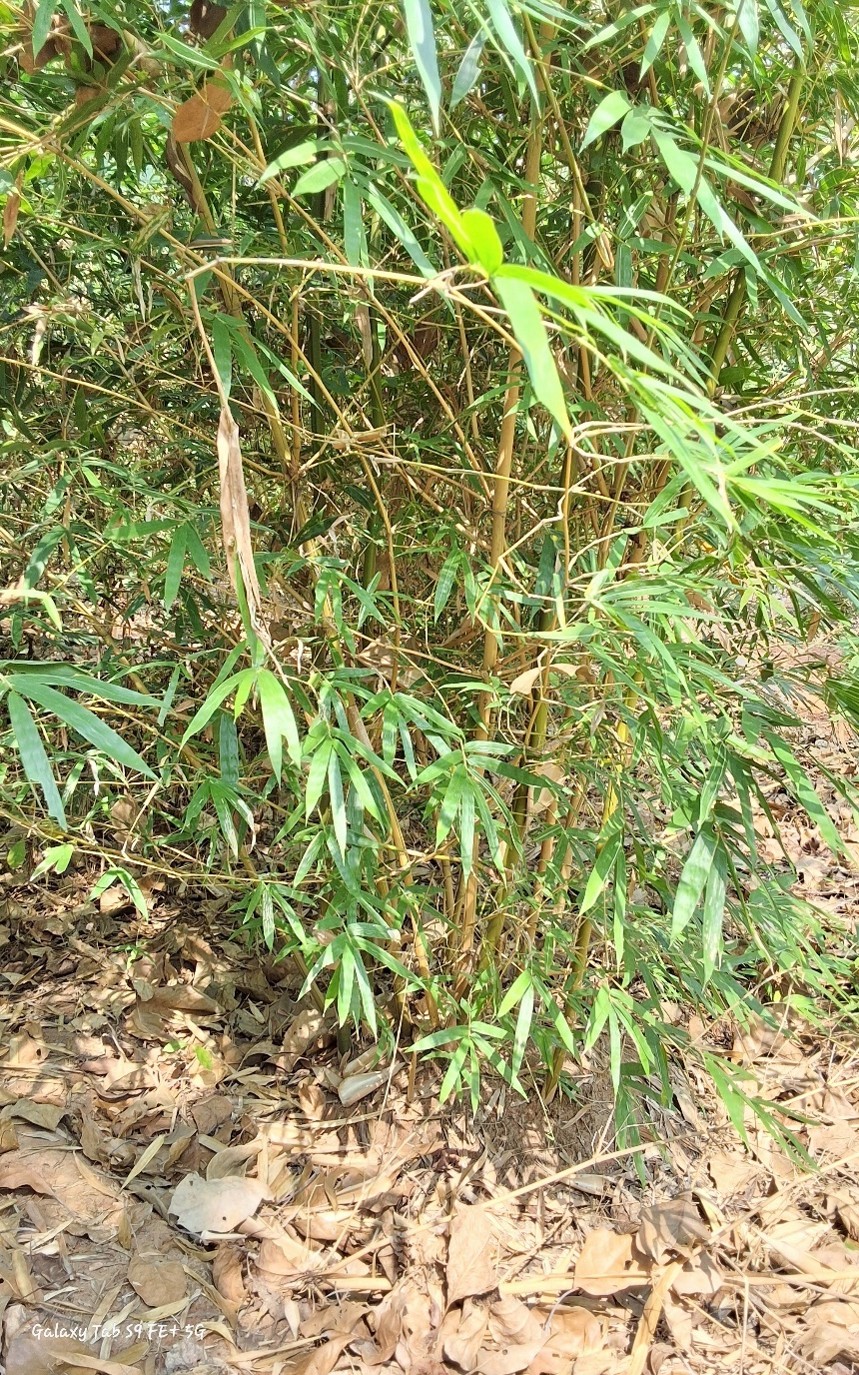Bambusa ventricosa 'Kimmei',

Bambusa ventricosa 'Kimmei',
commonly known as Golden Buddha Belly Bamboo, belongs to the family Poaceae, widely recognized as the grass family. This ornamental bamboo is a cultivar of Bambusa ventricosa, known for its unique, swollen internodes resembling a Buddha’s belly, and is particularly prized for its golden-yellow culms with green stripes.
This medium-sized bamboo typically grows to a height of 6 to 10 meters, with culm diameters ranging from 4 to 8 cm. The internodes are 15 to 30 cm long and are distinctly swollen, especially when grown in less fertile soils or under water stress, which accentuates its characteristic "belly" shape. The culms are smooth, glossy, and golden yellow with green stripes, making it a popular choice for ornamental purposes.
Ecologically, Bambusa ventricosa 'Kimmei' contributes to soil stabilization and erosion control in landscapes. Its dense clump-forming growth habit provides shelter and habitat for various small animals and insects. Additionally, it aids in carbon sequestration and enhances the aesthetic appeal of gardens and urban spaces.
This bamboo is widely cultivated for its ornamental value, particularly in tropical and subtropical regions. It is commonly used as a centerpiece in gardens, as a natural screen or hedge, and in bonsai cultivation due to its compact and striking appearance. The culms are also utilized in crafting decorative items and lightweight furniture.
Bambusa ventricosa 'Kimmei' thrives in well-drained soils, including sandy, loamy, and clay soils, with a pH range of 5.5 to 7.5. It requires moderate to high humidity and grows well in areas with annual rainfall between 1500 and 2500 mm. It can tolerate a range of conditions, including full sun and partial shade, and grows at altitudes from sea level to 800 meters. While it prefers consistent moisture, it is moderately drought-tolerant once established.
Propagation of Bambusa ventricosa 'Kimmei' is primarily achieved through rhizome or culm cuttings, as it rarely produces seeds due to its long flowering cycle. Tissue culture methods are also used for large-scale propagation to meet the demand for its ornamental applications.
Like other members of its genus, Bambusa ventricosa 'Kimmei' is monocarpic, flowering once in its lifetime before dying. The flowering cycle is unpredictable, often occurring every 30-60 years or more. Sporadic flowering is extremely rare in cultivated settings.
Bambusa ventricosa 'Kimmei', with its distinctive swollen internodes, vibrant golden color, and versatility, is a favorite among bamboo enthusiasts and landscapers. Its unique aesthetic appeal and ability to adapt to diverse environments make it a valuable addition to ornamental horticulture and sustainable landscaping practices.
Listen Audio:
Need assistance? BRTC Faculty